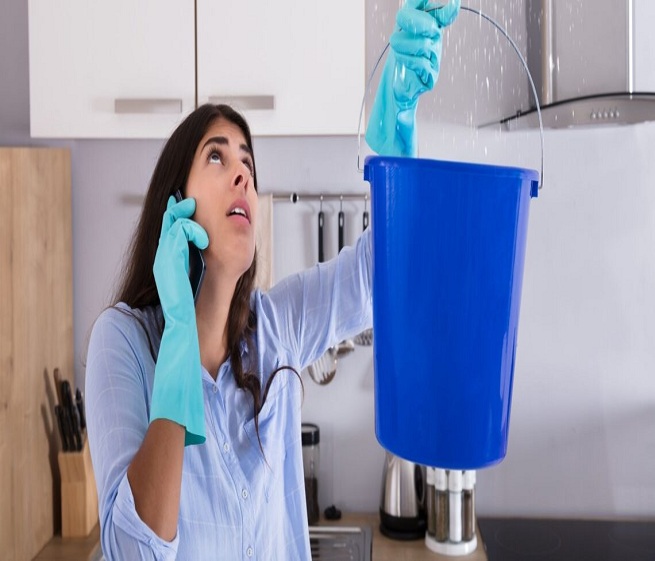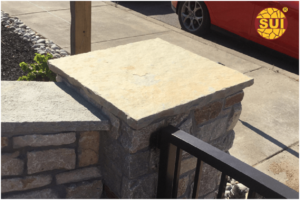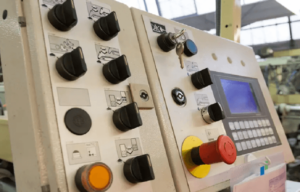How To Handle Water Damage Restoration After A Disaster

When faced with water damage post-disaster, your prompt action and strategic approach are key. From assessment to restoration, each step holds critical importance in salvaging your property. But what happens when the damage goes beyond what meets the eye? Stay tuned to discover the nuances of water damage restoration in Phoenix that can make all the difference in your recovery process.
Assessing the Damage
When facing water damage after a disaster, assessing the extent of the destruction is crucial for effective restoration. The first step is to evaluate the damage thoroughly. Determine the source of the water, whether it’s from a clean source like a burst pipe or a contaminated source like sewage backup. This identification is crucial as it impacts the restoration timeline and the necessary precautions to take.
Next, consider the contamination level of the water. Water damage is categorized into three levels based on the source and level of contamination. Clean water, such as that from a broken pipe, is category 1. Category 2 includes slightly contaminated water, like from a dishwasher leak. Category 3 is highly contaminated water, often due to sewage backup or flooding. Understanding the contamination level is vital for safety reasons and determining the appropriate restoration methods.
After evaluating the damage and contamination level, create a restoration timeline. This timeline should outline the steps needed to restore your property to its pre-damaged condition. It’s crucial to act promptly to prevent further damage and mold growth.
Securing the Property
To secure the property effectively after water damage, your immediate priority should be safeguarding against further harm. Start by setting up temporary fencing around the perimeter to prevent unauthorized access and keep out potential intruders. This will help maintain the security of the property and protect it from additional damage or theft.
Ensure all doors and windows are securely locked to prevent any unwanted entry. By securing the entry points, you can reduce the risk of further damage caused by vandals, looters, or animals seeking shelter in the affected area. Additionally, locking the doors can help contain any remaining water within the property and minimize the spread of damage to other areas.
In the aftermath of a disaster, securing the property is crucial to maintaining the integrity of the space and preventing any further losses. By taking these simple steps to set up temporary fencing and lock doors, you can significantly reduce the risk of additional damage and ensure that the restoration process can proceed smoothly. Remember, protecting the property now will save you time, money, and stress in the long run.
Documenting the Loss
Begin by capturing the extent of the damage promptly. Take detailed photo evidence of all affected areas in your property. Ensure you capture the damage from various angles and distances to provide a comprehensive visual record. These photos won’t only assist with insurance claims but also help restoration professionals understand the scope of the damage.
In addition to photo evidence, create an inventory list of all damaged items. Go through each room and make a detailed list of items that have been affected by the water damage. Include descriptions, quantities, and the condition of each item. This inventory list will be crucial when filing insurance claims and during the restoration process.
Organize your photo evidence and inventory list in a clear and accessible manner. Consider storing digital copies in the cloud or on a portable drive to ensure they aren’t lost. Keep physical copies in a safe place where they can be easily retrieved when needed.
Removing Standing Water
Addressing standing water promptly is crucial in the water damage restoration process. When dealing with standing water in your property after a disaster, it’s essential to act quickly to prevent further damage and mold growth. Standing water not only poses a threat to your property’s structural integrity but also creates a breeding ground for harmful mold and bacteria.
To begin the process of removing standing water, prioritize your safety and the safety of your property. Turn off the electricity in the affected areas to avoid any electrocution risks. Wear appropriate personal protective equipment such as rubber boots and gloves before stepping into the water.
Use a submersible pump or a wet vacuum to extract the water from your property efficiently.
Remember that mold can start growing within 24 to 48 hours after water damage occurs, so swift action is crucial. By removing standing water promptly, you aren’t only preventing further damage to your property but also reducing the risk of mold infestation.
Be thorough in the extraction process to ensure all water is removed from the affected areas.
Drying Out the Area
After successfully removing the standing water from your property, the next crucial step in the water damage restoration process is drying out the affected area. To ensure thorough drying, utilize dehumidifiers and promote ventilation within the space. Dehumidifiers extract excess moisture from the air, aiding in the drying process and preventing mold growth. Opening windows and using fans can also help improve air circulation, expediting the evaporation of residual moisture.
In order to effectively track the progress of drying, consider conducting moisture mapping and monitoring. Moisture mapping involves identifying areas with high moisture levels to target them for specific drying efforts. This can be done using moisture detection tools such as moisture meters or infrared cameras. Regularly monitor these areas throughout the drying process to ensure that moisture levels are decreasing as expected.
Remember to keep a close eye on the humidity levels in the space as well. Ideally, the humidity should be maintained at a level below 60% to prevent mold and mildew growth. Continue running dehumidifiers and promoting ventilation until moisture levels are back to normal. By diligently drying out the affected area using dehumidifiers, ventilation, moisture mapping, and monitoring, you can effectively mitigate water damage and restore your property to its pre-disaster condition.
Salvaging Belongings
Upon completing the crucial step of drying out the affected area, the focus shifts to salvaging belongings that may have been impacted by the water damage. Salvaging electronics is a top priority. Start by unplugging all electronic devices and ensuring they’re completely dry before attempting to power them on. For items like smartphones and laptops, remove the batteries if possible and allow them to dry separately. It’s advisable to consult a professional for thorough inspection and potential repairs to prevent any safety hazards.
Preserving documents is another critical task. Carefully separate any wet documents and lay them out flat to dry. Avoid peeling apart stuck pages as they may tear easily when wet.
For important documents like passports, birth certificates, or titles, consider consulting a document restoration specialist for the best chances of salvaging them.
If you have valuable artwork or photographs, handle them with care and consult a professional conservator for guidance on proper drying techniques.
Disinfecting and Sanitizing
To ensure a safe and healthy environment post-water damage, the critical step of disinfecting and sanitizing the affected area must be undertaken promptly. The cleaning process after a water disaster involves more than just removing visible water and debris. Bacteria, mold, and other harmful microorganisms can thrive in damp environments, posing serious health risks if not properly addressed.
When disinfecting and sanitizing, it’s crucial to follow safety precautions to protect yourself and others. Wear protective gear such as gloves, masks, and goggles to prevent direct contact with contaminated water and surfaces. Ensure proper ventilation in the area to reduce the risk of inhaling harmful fumes from cleaning agents.
Start by thoroughly cleaning all surfaces with a disinfectant solution to kill germs and bacteria. Pay special attention to areas that were submerged in water, as they’re more prone to contamination.
After cleaning, sanitize the area using a mixture of water and bleach to further eliminate any remaining pathogens.
Remember to discard any porous materials that were severely affected by water damage, as they can harbor mold and bacteria even after cleaning. By following these cleaning processes and safety precautions, you can effectively disinfect and sanitize the affected area, creating a safe and healthy environment for restoration.
Repairing Structural Damage
Once water damage has been mitigated, the next crucial step is repairing structural damage to restore the affected area to its pre-disaster condition.
The first step in repairing structural damage is to conduct a thorough structural assessment. This assessment involves inspecting the extent of the damage to key structural components such as walls, floors, ceilings, and support beams. Identifying the full scope of the damage will help in devising an effective plan for the rebuilding process.
After the structural assessment, the rebuilding process can begin. This typically involves removing damaged materials, such as drywall, insulation, and flooring, and replacing them with new materials. It’s essential to ensure that the replacements are of high quality and properly installed to prevent future issues. Additionally, any compromised structural elements should be reinforced or replaced to guarantee the stability and safety of the restored area.
Throughout the rebuilding process, it’s crucial to work with experienced professionals who specialize in structural repairs. Their expertise will ensure that the repairs are done correctly and up to code. By following a systematic approach, including a comprehensive structural assessment and a meticulous rebuilding process, you can successfully repair the structural damage caused by water disasters and restore the affected area to its original state.
Preventing Mold Growth
Mold growth is a common concern following water damage incidents. Mold thrives in moist environments, making it crucial to focus on mold prevention and moisture control after a disaster.
To prevent mold growth, the first step is to thoroughly dry all affected areas within 24-48 hours of the water damage occurring. Use dehumidifiers and fans to increase air circulation and speed up the drying process.
Inspect the affected areas for any signs of excess moisture or water accumulation. Pay close attention to hidden spaces like within walls, under carpets, and in basements.
Properly ventilate high-moisture areas such as bathrooms and kitchens to reduce humidity levels. Repair any leaks or water damage promptly to prevent further moisture buildup.
Consider using mold-resistant products when replacing materials in the affected areas. These products can help inhibit mold growth and provide an added layer of protection against future issues.
Regularly monitor humidity levels in your home using a hygrometer, aiming to keep levels below 60%.
Working With Insurance Companies
After handling the critical task of preventing mold growth in your property post-water damage, the next step involves navigating the process of working with insurance companies. Dealing with water damage can be stressful, but understanding the claim process and your policy coverage is crucial for a smooth restoration journey.
When it comes to working with insurance companies, the first step is to contact your insurance provider promptly after the water damage incident. They’ll guide you through the claim process, which typically involves documenting the extent of the damage, providing receipts for repairs, and possibly having an adjuster assess the situation.
Understanding your policy coverage is essential to ensure you receive the maximum benefits. Review your policy to understand what’s covered and what may not be included in your insurance plan.
It’s also important to document the damage thoroughly with photographs and written descriptions to support your claim.
Be proactive in communicating with your insurance company and ask questions if there are any uncertainties regarding your coverage. By staying organized, documenting all communication, and following the necessary procedures, you can increase the likelihood of a successful insurance claim and expedite the water damage restoration process.
Conclusion
In conclusion, by following these steps, you can effectively handle water damage restoration after a disaster. Act quickly, secure the property, and work with professionals to assess, remove, and repair the damage. Don’t forget to document the loss, prevent mold growth, and collaborate with your insurance company for a smoother claims process. With diligence and attention to detail, you can successfully restore your property and minimize the impact of water damage.





